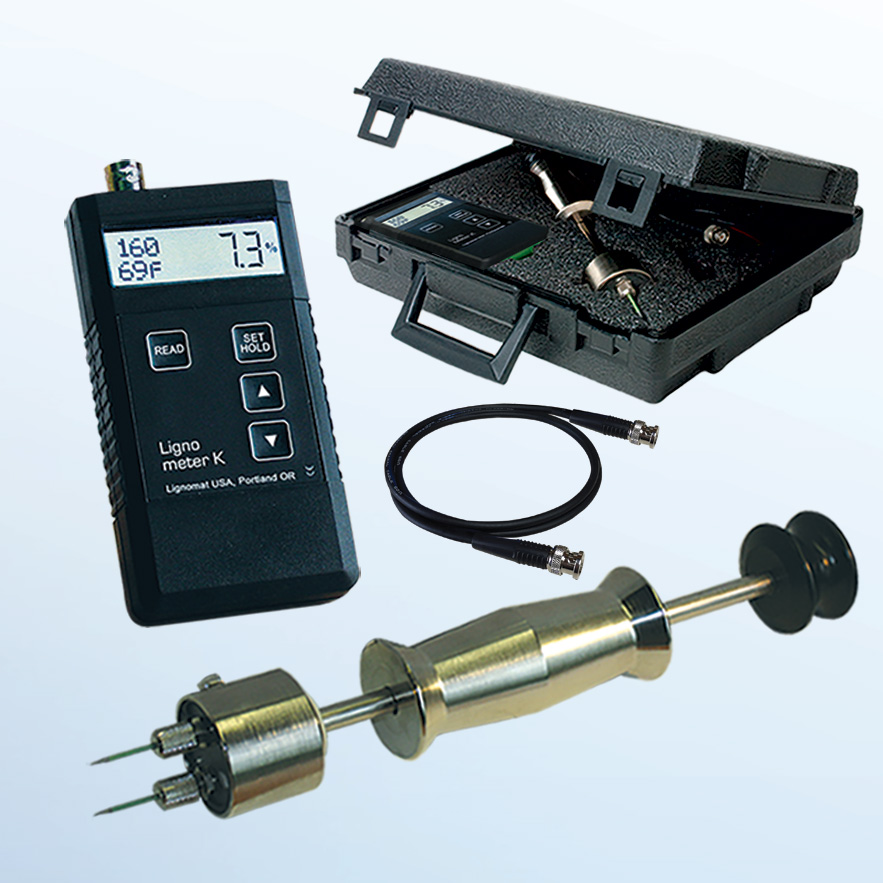The Ultimate Guide to Choosing the Right Moisture Meter for Your Demands
The Ultimate Guide to Choosing the Right Moisture Meter for Your Demands
Blog Article
Understanding the Relevance of a Moisture Meter in Protecting Against Mold and Water Damage in Your Home
In the world of home upkeep, the presence of dampness can usually be a quiet yet formidable opponent, capable of causing prevalent mold and mildew growth and insidious water damages if left untreated. Recognizing the importance of a moisture meter in this fight is not merely an alternative however a strategic requirement.
Importance of Moisture Discovery
Efficient wetness detection techniques are crucial for securing properties and protecting against prospective mold and mildew growth and water damage. Dampness can seep into numerous building materials, causing architectural problems and health risks. By utilizing a wetness meter, homeowner can proactively identify areas susceptible to excess dampness, permitting timely intervention and reduction approaches.
Moisture meters offer precise readings of wetness degrees in various products such as concrete, drywall, and timber. This data helps in pinpointing areas of issue, even in concealed or hard-to-reach areas. Early discovery of dampness buildup makes it possible for prompt repairs or adjustments to avoid additional damage.

Just How Moisture Meters Work
Dampness meters play an essential role in the aggressive identification of excess wetness, aiding in the avoidance of potential mold development and water damage by supplying accurate readings of dampness levels in different structure materials. These gadgets function based on various concepts, depending upon their kind. Moisture Meter. Pin-type moisture meters, as an example, have 2 pins that penetrate the material to gauge the electrical resistance between them. When wetness exists, it enhances the material's conductivity, causing a reduced resistance reading. Pinless wetness meters, on the various other hand, usage electromagnetic sensors to check the product without triggering damages. These sensing units give off electro-magnetic signals that penetrate the material and determine the dielectric properties, indicating wetness material. Some progressed dampness meters pin both combine and pinless innovations for detailed moisture detection. Comprehending exactly how moisture meters feature is crucial for timely and accurate moisture level assessments, enabling effective safety nets against mold and water damages.
Detecting Early Caution Signs
Upon preliminary assessment of a building, identifying refined indications of excess dampness ends up being vital in the very early detection of prospective mold growth and water damages. Water discolorations can signify leaks or seepage, while peeling off paint or wallpaper might be an outcome of wetness compromising the adhesion of these products to the surface area. Furthermore, an increase in allergic reaction signs and symptoms or breathing problems among owners might suggest the presence of mold and mildew due to excess wetness.
Preventing Mold And Mildew Development
Recognizing very early caution signs of excess wetness within a residential or commercial property not just makes it possible for punctual discovery of possible mold and mildew development and water damage yet also offers as an aggressive step in stopping the expansion of mold. To effectively prevent mold and mildew development, it is essential to attend to any kind of sources of moisture quickly. This can consist of dealing with leakages in roofings, pipelines, or home windows, ensuring proper ventilation find more info in damp locations like washrooms and cooking areas, and making use of dehumidifiers in high-humidity rooms. Routinely preserving the home and examining's plumbing, roof covering, and rain gutters can likewise help in preventing water breach that might result in mold development.
Along with attending to moisture sources, keeping interior humidity levels listed below 60% can substantially hinder mold development. Proper ventilation, ample insulation, and using air conditioners or fans can aid regulate indoor humidity degrees. Keeping track of wetness degrees in locations prone to moisture, such as cellars and creep spaces, using a dampness meter can also aid in early discovery of raised dampness levels and potential mold growth. By taking aggressive actions to avoid excess wetness and mold growth, home owners can safeguard their residential or commercial property and indoor air high quality.
Benefits of Regular Surveillance
Normal tracking of wetness levels in a residential or commercial property can play an important role in keeping a healthy and balanced indoor environment and protecting against possible mold and water damage. By regularly examining wetness levels, home owners can find any discover here type of issues without delay and take needed actions to stop mold development and water damage. Among the crucial benefits of routine monitoring is very early detection. By determining and dealing with high dampness levels early on, home owners can intervene prior to mold has the opportunity to spread out and develop. This aggressive approach can conserve both money and time over time by protecting against substantial mold removal and repair service expenses.
Additionally, normal surveillance permits homeowners to track patterns and trends in moisture levels in time. By establishing a baseline and tracking modifications, individuals can determine any type of areas of worry or prospective vulnerabilities in the building's framework. This data-driven strategy makes it possible for targeted treatments and upkeep efforts to deal with underlying problems before they escalate into more significant issues. Inevitably, the constant tracking of moisture degrees empowers homeowners to secure their residential or commercial property, safeguard their health, and preserve the integrity of their interior setting.

Conclusion

By using a moisture visit the website meter, property proprietors can proactively determine locations susceptible to excess moisture, enabling for timely treatment and mitigation methods.

Monitoring moisture levels in locations vulnerable to wetness, such as cellars and creep areas, utilizing a wetness meter can additionally help in early detection of raised dampness degrees and prospective mold growth. (Moisture Meter)
Report this page